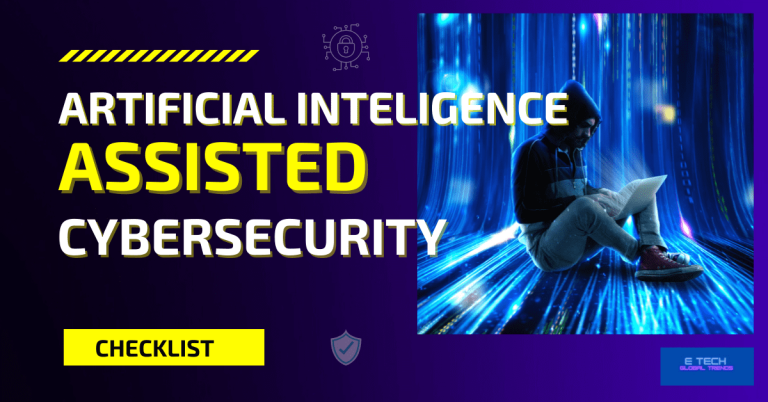Front end Developer
In order to make components responsive to various viewing settings, including smartphones, tablets, and desktops, front-end developers design and optimize visible sections of a website. To create an appealing website, front end developer employs client-side programming languages like HTML, CSS, & JavaScript.
How does the front end develop?
Front-end web developer responsibilities and skills Walking together. The jobs that developers perform on a daily basis frequently overlap, and many of them need an understanding of programming languages like JavaScript or HTML.
In this article, we’ll discuss the many devices and technological advancements that these professionals use on a daily basis as well as the skills and expertise needed to excel in the field.
Are you ready to go?
Then, stay tuned until the end
So, friends, Making ensuring website visitors can readily engage with the page is the main responsibility of a front-end developer. In order to program a website’s look and handle debugging,
- they combine technology,
- design, and
- programming.
The work that a front-end developer does is evident in everything you view, click on or utilize when browsing a website.
Although every company is different, you can generally expect a front-end developer’s position to include any or all of the following
improving user experience.
Competencies Necessary for Web Design
Of course, front end or back end, you should have the following skills as well.
Every candidate who wants to work as a professional web designer has to have a few talents that will help them along the way.
Number 01
To develop fresh website ideas and methods for representing digital data, web designers must have a creative vision.
Number 02
Anyone who wants to work as a web designer has to be computer literate and have a solid understanding of programming languages.
Number 03
Additionally, successful teamwork depends on having good communication skills in order to comprehend consumer needs.
Number 04
The candidate has to be proficient in problem-solving and analysis.
What does front-end developer concern
- Using HTML, JavaScript, & CSS to bring concepts to life.
- Designing and maintaining the user interface.
- Making webpages for mobile devices.
- Coming up with strategies to improve site interaction across all browsers.
The majority of front-end engineers devote a significant amount of their time to HTML, CSS, & JavaScript.
Thus, success in each depends on mastering it.
And also, furthermore
How Different Programming Languages Are Used by Designers
Front-end developers use HTML to set forth the fundamental organization and content of a document. For style and more complicated interactive scenarios, they additionally employ JavaScript and CSS. AJAX, a mix of JavaScript & XML, may update certain website areas without reloading the entire page.
frameworks and libraries,
Front-end developers typically deal with libraries for these programming languages, such as AngularJS, jQuery, & React, in addition to design frameworks, like Foundation and Bootstrap. The strength and adaptability of CSS are enhanced by SASS and other extensions.
Additional front-end programming languages
Python, Ruby, or PHP can use by less regularly employed front-end engineers to connect data with a website’s back end.
Because they blend web design with programming in their work, front-end developers utilize cross-disciplinary technologies.
What are they?
1.0 Graphic design tools
Front-end developers typically use visual design tools to build a prototype of the website in order to experiment and test ideas on the user interface prior to writing the actual code.
Front-end developers are responsible for much more than simply the code of a website.
We’ll go through certain of the more specialized auxiliary skills that these professionals employ in their work below.
2.0 Using CSS Preprocessors as a starting point
The majority of front-end developers make use of CSS preprocessors to add functionality to CSS coding, rendering it more scalable & user-friendly. Prior to being published on your website, CSS preprocessors convert the code into properly written CSS that works in a variety of browsers; the most well-liked ones are LESS & SASS.
3.0 Employing RESTful APIs and Services
RESTful services and APIs will also be used and used by a front-end developer. The lightweight REST is Representational State Transfer. architecture is adhered to by APIs and RESTful services, simplifying network connections.
4.0 Creating and Maintaining Mobile & Responsive Design
Because more people are accessing the internet through mobile devices, it is essential for sites to be mobile-friendly. Most front-end developers nowadays create responsive or mobile interfaces for their websites.
Responsive design alters a website’s layout according to the user’s device & screen size, which may call for changes to the functionality and content.
5.0 Moving Forward Across Browsers
If your website creation isn’t functional with the entire range of contemporary browsers, you’ll miss out on a huge segment of prospective online users. Despite the fact that browsers are largely uniform, there can be considerable variations, notably in how they see coding.
A front-end website designer must be aware of these differences as they may be seen in their code.
How do you develop the full stack?
You must learn about the front and backend of web development to progress as a full-stack developer.
All computer program components that consumers may directly interact with are called the front end,
often referred to as the client or customer-facing side.
Then what is the back end?
The technology used in the background to process;
- user requests,
- calculate business logic, and
- permanently store sensitive data
is referred to as the back end.
Imagine the rear end as the mass of an iceberg, with the front end being the visible tip that protrudes above the water’s surface.
The internal programs that run a company’s servers, databases, and proprietary software must be built and improved by programmers, whereas back-end developers are responsible for front-end development. The information delivery channels that connect with and reach users who run front-end interfaces are built by back-end developers.
Full-stack development can help in this situation. The whole front and back end architecture of a website or application are referred to as “full stack.” Full stack specialists may address all sides of the adage’s equation, as one might anticipate.
What distinguishes front-end development from back-end development?
Front-end development
is the process of creating the elements of a website or online application that users directly interact with, such as the user interface and user experience. Making a website or application more aesthetically pleasing and user-friendly includes using technologies like;
- HTML,
- CSS, and
- JavaScript.
Back-end development
This is the term for the logic that runs on the server, database, and other components of a website or online application. The purpose of this process is to ensure that the website or application runs smoothly and effectively. It uses technologies like PHP, Ruby on Rails, Python, & Java.
The user interface is the primary emphasis of front-end development, whereas the server & database are the primary focus of back-end development.
What advantages does front-end development provide for your website?
The process of designing a website’s user interface & user experience (UI/UX) is known as front-end development. It entails planning and implementing the website’s interface, graphic components, and interaction. The following are some of the main advantages of a website’s front-end development strategy:
Enhancing the user experience
A user-friendly front end contributes to a satisfying user experience. A website may become more user-friendly and intuitive as a result, of attracting and keeping more visitors.
Improved Usability:
The process of front-end development is crucial for producing interactive and functional features like buttons, forms, & menus. This makes the website more informative and entertaining for users.
Better Branding
A website’s visual identity may be developed through front-end development to make it recognized and consistent. This can support the development of brand awareness and user trust.
improved search engine optimization (SEO)
By making a website well-structured, quick to load, and mobile-responsive, front-end development may also help a website rank higher in search results. This may contribute to an increase in a website’s natural traffic.
Enhancing Accessibility
A website’s accessibility, particularly for users with impairments, may be made sure through front-end development. This might broaden a website’s audience and influence.
A high-quality website that provides a good user experience, supports corporate objectives, and increases engagement and conversions depends heavily on excellent front-end development.
Front-end development advantages
As you know already, there are a few differences. finally, it depends on the situation where you apply. Let’s see what are.
1.0 strong demand
As more businesses try to construct engaging websites and applications, there is a persistently strong demand for front-end developers.
2.0 “User in the center”
Front-end developers put a strong emphasis on making entertaining, aesthetically pleasing, and simple-to-use user experiences.
3.0 potential for career advancement
Front-end design is a sector that is continually expanding, with fresh tools and technologies appearing all the time. This creates the potential for career development.
4.0 Possible Cooperation with other teams
To make sure the finished product satisfies user requirements, front-end developers closely collaborate with back-end developers, UX designers, and other stakeholders.
Front-end development’s drawbacks
however, there are disadvantages too, such as…
1.0 Optimizing performance
Front-end engineers need to make their designs faster and more responsive, which calls for a solid grasp of web technologies and industry standards.
2.0 Browser compatibility
It can be difficult and time-consuming for front-end developers to make sure that their designs work with various web browsers and devices.
3.0 Debugging and cross-functional solving issues
Front-end engineers frequently need to collaborate with other teams to tackle cross-functional issues, and debugging may be difficult when different technologies are involved.
4.0 staying abreast of developments with technological advances
Since front-end programming is a profession that is continually expanding, front-end developers must continuously learn about and adjust to new tools and technologies.
Back-end development advantages:
1.0 Complex problem-solving
Front-end development frequently entails resolving challenging issues with data management, scalability, and security, offering chances for both personal and professional development.
2.0 Server-side management
Back-end programmers have total authority over a website’s or online application’s server-side, giving them the potential to enhance performance, security, & scalability.
3.0 Consistently strong demand
Many businesses seek to establish dependable and scalable online applications, which has resulted in high demand for back-end developers.
4.0 Integration of additional systems
Back-end developers frequently have to interface the web application using other systems & technologies, giving them the chance to use a variety of tools and technologies.
Back-end development’s drawbacks
1.0 Performance optimization
Back-end engineers must speed up and scale the server-side code, which calls for a solid grasp of server-side best practices and technologies.
2.0 Debugging & problem-solving
Back-end code debugging may be difficult and time-consuming since the issues are sometimes obscured and need a solid grasp of server-side technologies & database administration.
3.0 Security issues
Back-end developers have to be aware of security best practices while keeping up with the most recent security threats in order to ensure the protection of sensitive data.
4.0 Lack of direct user engagement
Compared to front-end development, back-end development involves less direct user interaction. and frequently burry behind the scenes, which might make it less satisfying for certain people.
Is there a difference between front-end and back-end development?
Yes, definitely.
Then, how?
A web application’s front-end and back-end development comprises two distinct parts that cooperate to produce a seamless user experience.
These are their differences:
A Technological definition
Back-end development is the process of developing the server side of a web application that handles data and provides content, whereas front-end development is the process of building the user interface.
B Technologies
The user interface is often built with HTML, CSS, and JavaScript, but the server side of an application is typically built using programming languages such as Java, Python, Ruby, or PHP for back-end development.
C Focus
Button, menu, form, and other user interface components are only a few examples of the visual & interactive elements that are the emphasis of front-end development in a web application.
Back-end development concerns the code that runs the online application in the background, including;
- server-side scripting,
- database administration, and
- APIs.
D Responsibility
The smooth and easy user experience, the reduction of page load times, and cross-browser compatibility are all tasks that fall within the purview of front-end engineers. Back-end developers are in charge of creating and maintaining the program’s architecture, running databases, and making sure the application is secure.
Summary
In conclusion, Front end Developer & back-end developer belong to separate types of website creation that call for various sets of knowledge, tools, and tasks. To offer an outstanding user experience and maximum performance, an effective web application needs close coordination between front-end & back-end engineers.
Hope this content helps
Read more on related topics here datasets, synthetic data generation, FastAPI







